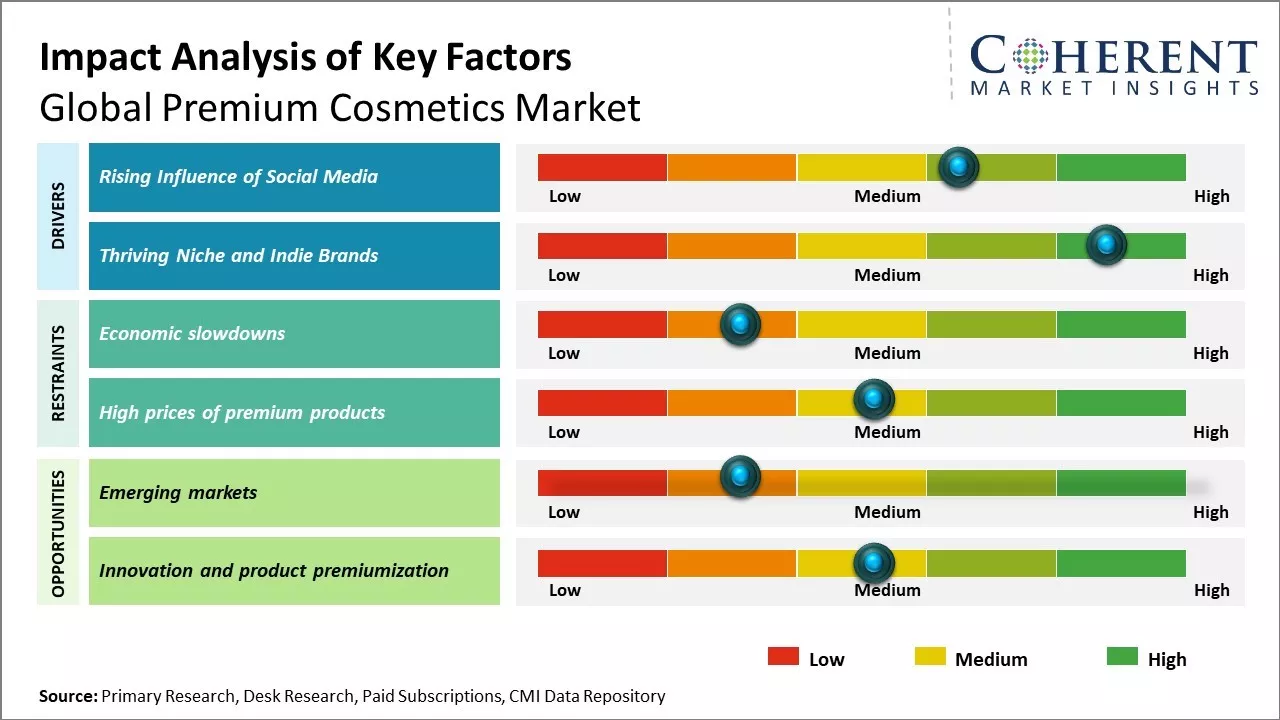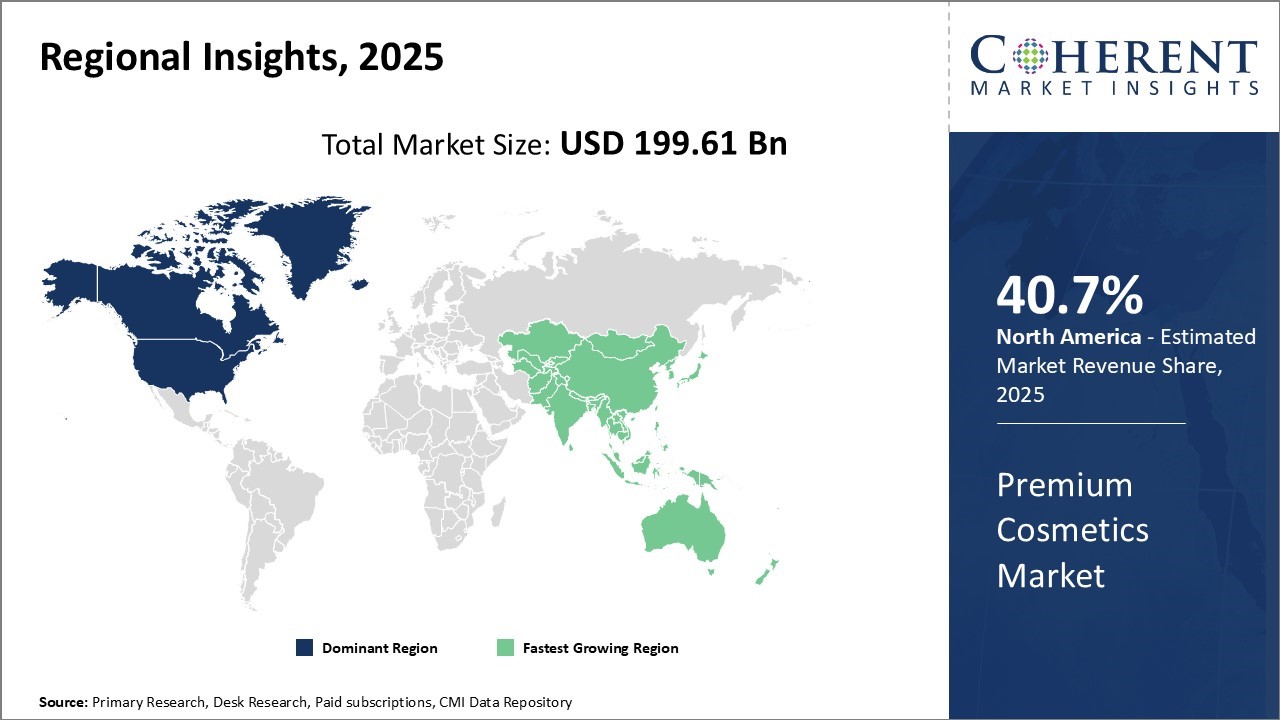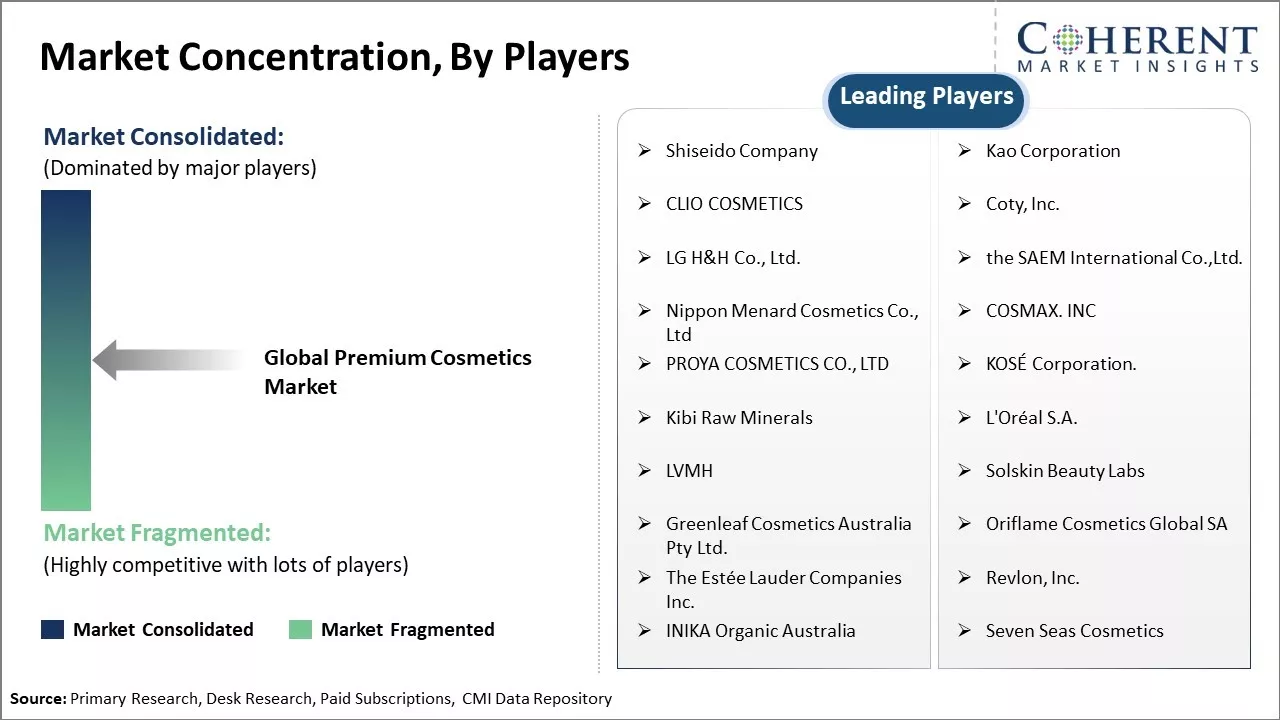The premium cosmetics market is estimated to be valued at USD 199.61 Bn in 2025 and is expected to reach USD 337.91 Bn by 2032, exhibiting a compound annual growth rate (CAGR) of 7.8% from 2025 to 2032.

To learn more about this report, Download Free Sample
The premium cosmetics market is expected to witness significant growth going forward. Key factors such as rising disposable income and changing lifestyle patterns have bolstered the demand for premium cosmetic brands across the world. Additionally, the increasing inclination of young population towards grooming and appearance enhancement products is also augmenting the market expansion. Further, growing influence of digital media and celebrity endorsements is making premium cosmetic brands more aspirational for consumers. Escalating demand for organic and natural cosmetic products is another factor driving more customers towards premium ranges. However, availability of cheaper alternatives from local manufacturers may hinder the premium cosmetics market growth to some extent over the forecast period.
|
Current Events |
Description and its impact |
|
Geopolitical Conflicts and Supply Chain Disruptions |
|
|
Technological and Innovation Trends |
|
|
Economic and Consumer Behavior Shifts |
|
Uncover macros and micros vetted on 75+ parameters: Get instant access to report
Makeup is expected to contribute 39.3% share of the market in 2025. Makeup has been one of the fastest growing segments within the premium cosmetics market. Women are increasingly leveraging makeup products not just for special occasions but also for regular everyday use. There is a rising popularity of innovative makeup products that help enhance natural beauty in a subtle yet effective way. Cosmetic companies have been introducing a wide variety of products ranging from base makeup to advanced color cosmetics that cater to different skin tones and shades. In particular, products offering natural coverage with long lasting formulations are gaining high traction.
Another key factor driving makeup growth is the rising influencer culture. Social media platforms are filled with makeup tutorials and reviews that induce trials among younger consumers. Popular entertainers and digital stars have further normalized the use of advanced makeup. For instance, in April 2025, the Office of Ananya Birla, part of the Aditya Birla Group, launched LOVETC, a premium cosmetic brand, to fill the market gap for high-quality colour cosmetics in India.
Offline is expected to contribute 77.1% share of the market in 2025. While online retail is gaining global prominence, the offline channel continues to lead in the premium cosmetics space. Being an evaluation and experience good, consumers still prefer to test and understand products before purchase. Educated sales associates and dedicated beauty advisors in physical stores address all queries patiently and help users find the right match. This personalized attention makes the offline journey more informative. Moreover, brick-and-mortar stores arrange trials, free samples, and interactive sessions, making it easier to visualize actual outcomes. Many outlets also offer on-spot mini-makeovers using premium brands. This encourages instant gratification and same-day buys. The social aspect of shopping with friends and family in physical environs further bolsters the offline experience. For instance, in November 2024, Tira Beauty, the multi-brand beauty retail chain by Reliance Retail, introduced Augustinus Bader haircare and skincare products across its physical stores to expand its premium brand portfolio and provide a wide range of research-based beauty solutions. Such innovations are propelling the premium cosmetics market share.

To learn more about this report, Download Free Sample
North America holds the largest market share of 40.7% in 2025. Consumers in the North America region increasingly drive demand for clean, sustainable, and inclusive beauty products. They actively seek hybrid skincare-makeup solutions, personalized experiences powered by technology, and ethically formulated options. Social media influencers and celebrity-backed brands shape purchasing decisions, particularly among younger audiences. Shoppers value innovation, convenience, and engaging in-store experiences, which enhance brand loyalty. By embracing omnichannel strategies that blend online and physical retail, brands strengthen customer engagement and retain high-income consumers who prioritize quality, performance, and luxury.
For instance, in June 2025, Estée Lauder unveiled on Amazon.ca’s Premium Beauty store, expanding access to its skincare, makeup, and fragrances for customers across Canada with the convenience of Amazon. Such innovations are proliferating the premium cosmetics market share.
Asia Pacific consumers actively seek premium cosmetics containing scientifically proven ingredients like nano gold peptide, hyaluronic acid, polypeptides, and antioxidants. They view clinically formulated products as more effective and of superior quality. Local beauty brands, including K-beauty and J-beauty, develop targeted formulations to meet these expectations. E-commerce platforms such as Douyin, Xiaohongshu, Nykaa, Lazada, and Tmall connect directly with customers in lower-tier cities by offering interactive tutorials and influencer-driven content, effectively bypassing traditional retail limitations. For instance, in May 2025, Sephora expanded its exclusive brand lineup by launching Haus Labs by Lady Gaga in seven Asia Pacific markets, offering the full range of 125 cosmetic products.
Chinese customers increasingly support indigenous “Guochao” brands that blend traditional aesthetics and ingredients—like those from Florasis and Pechoin—with advanced technology and engaging storytelling. Local brands continue to gain market share by delivering premium quality on par with global players while evoking cultural pride. Clinical and dermatologist-backed brands build strong credibility, while domestic R&D centers drive innovation by creating targeted, high-performance formulations that attract educated, results-oriented consumers. For instance, in October 2024, L'OCCITANE Group, a global leader in premium beauty and wellness products, partnered with China Duty Free Group (CDFG) to open the first-ever L'OCCITANE en Provence Botanical Lab pop-up at the CDF International Duty Free Complex in Sanya, Hainan. The pop-up combines nature and science to deliver customized beauty experiences.
Consumers actively choose cosmetics created with natural, non-toxic chemicals and eco-friendly packaging, and they demand cruelty-free and vegan labels. Brands respond with transparent sourcing and sustainability promises. They broaden shade ranges and modify formulations to accommodate different skin tones and kinds, hence increasing social inclusion and product trust. Brands use AI diagnostics and tailored routines to adapt experiences and increase loyalty, relying on online sales for convenience and reach. For instance, in January 2025, The Estée Lauder Companies launched The Ordinary brand on the US Amazon Premium Beauty Store, making it the latest addition to its portfolio available on the platform. US customers can now purchase The Ordinary’s bestselling products with the convenience of fast, free shipping for Prime members.

To learn more about this report, Download Free Sample
| Report Coverage | Details | ||
|---|---|---|---|
| Base Year: | 2024 | Market Size in 2025: | USD 199.61 Bn |
| Historical Data for: | 2020 To 2024 | Forecast Period: | 2025 To 2032 |
| Forecast Period 2025 to 2032 CAGR: | 7.8% | 2032 Value Projection: | USD 337.91 Bn |
| Geographies covered: |
|
||
| Segments covered: |
|
||
| Companies covered: |
Shiseido Company, Kao Corporation, CLIO COSMETICS, Coty, Inc., LG H&H Co., Ltd. , the SAEM International Co.,Ltd., Nippon Menard Cosmetics Co., Ltd, COSMAX. INC, PROYA COSMETICS CO., LTD, KOSÉ Corporation., Kibi Raw Minerals, L'Oréal S.A., LVMH, Solskin Beauty Labs, Greenleaf Cosmetics Australia Pty Ltd., Oriflame Cosmetics Global SA, The Estée Lauder Companies Inc., Revlon, Inc., INIKA Organic Australia, and Seven Seas Cosmetics |
||
| Growth Drivers: |
|
||
| Restraints & Challenges: |
|
||
Uncover macros and micros vetted on 75+ parameters: Get instant access to report
Consumers are increasingly prioritizing clean beauty products made with natural, non-toxic, and ethically sourced ingredients. Brands respond by adopting eco-friendly packaging and transparent sourcing to build trust and loyalty. Sustainability initiatives extend beyond ingredients, including cruelty-free certifications and carbon-neutral production. This trend reflects a growing consumer demand for environmental responsibility and wellness, driving premium brands to innovate responsibly while maintaining high-quality performance.
The premium cosmetics market is rapidly shifting towards digital channels, where social media influencers, AR/VR try-ons, and AI-driven personalized skincare solutions shape consumer choices. Brands use data analytics to tailor product recommendations and experiences, enhancing engagement. E-commerce platforms and omnichannel retail strategies enable seamless shopping journeys. Personalization empowers consumers to find products suited to their unique needs, fostering deeper brand loyalty and creating a competitive advantage in the crowded premium segment.
Share
Share
Missing comfort of reading report in your local language? Find your preferred language :
Transform your Strategy with Exclusive Trending Reports :
Frequently Asked Questions
Joining thousands of companies around the world committed to making the Excellent Business Solutions.
View All Our Clients